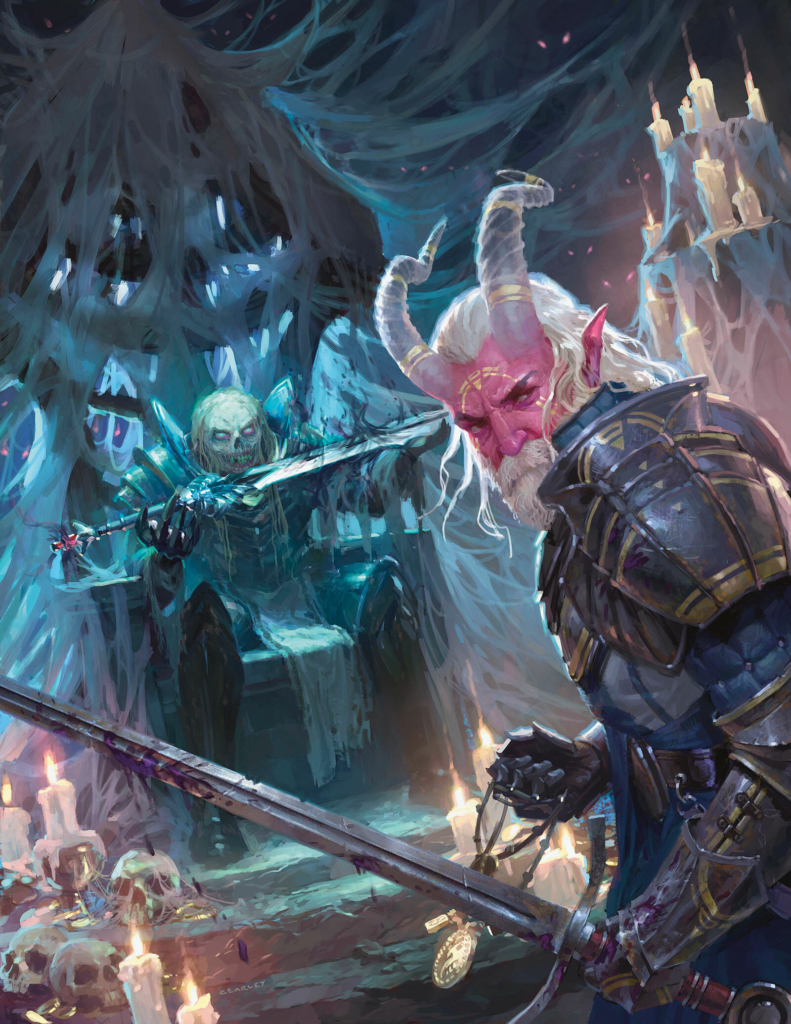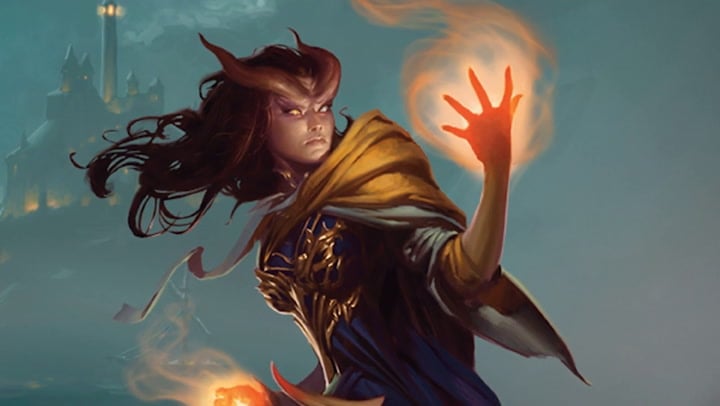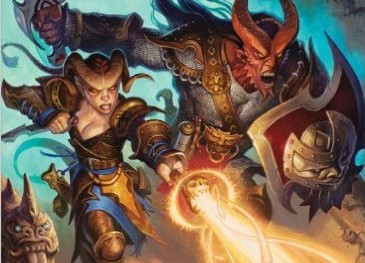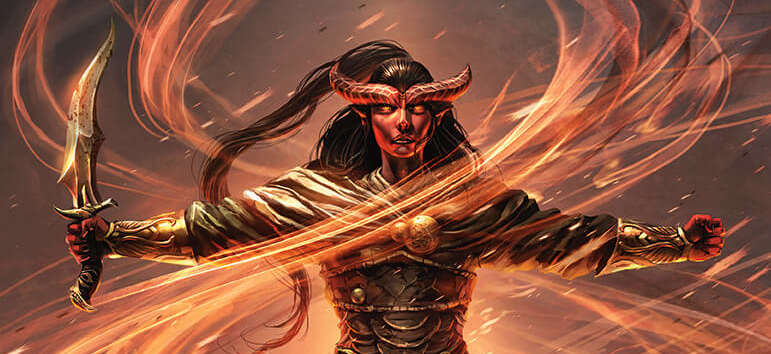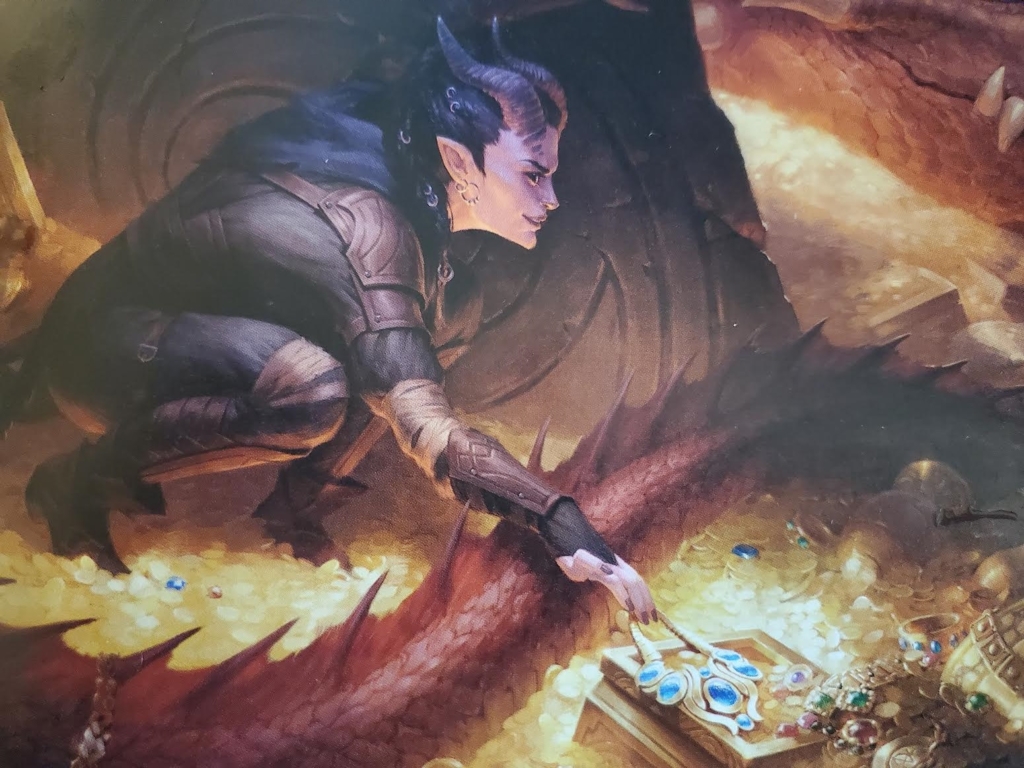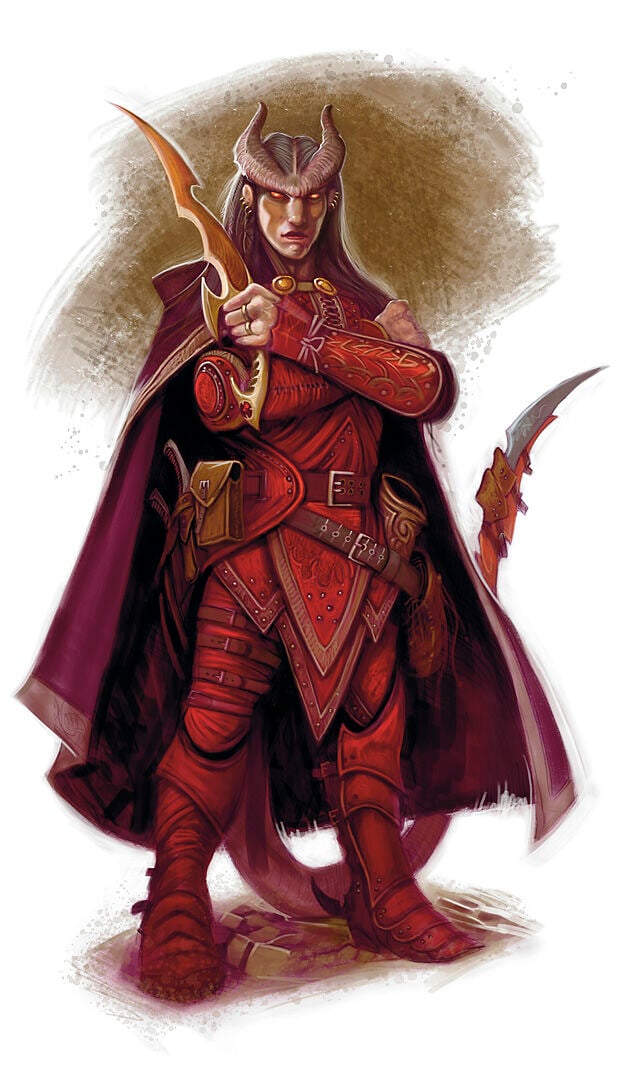D&D Race Guide: How to Play a Tiefling
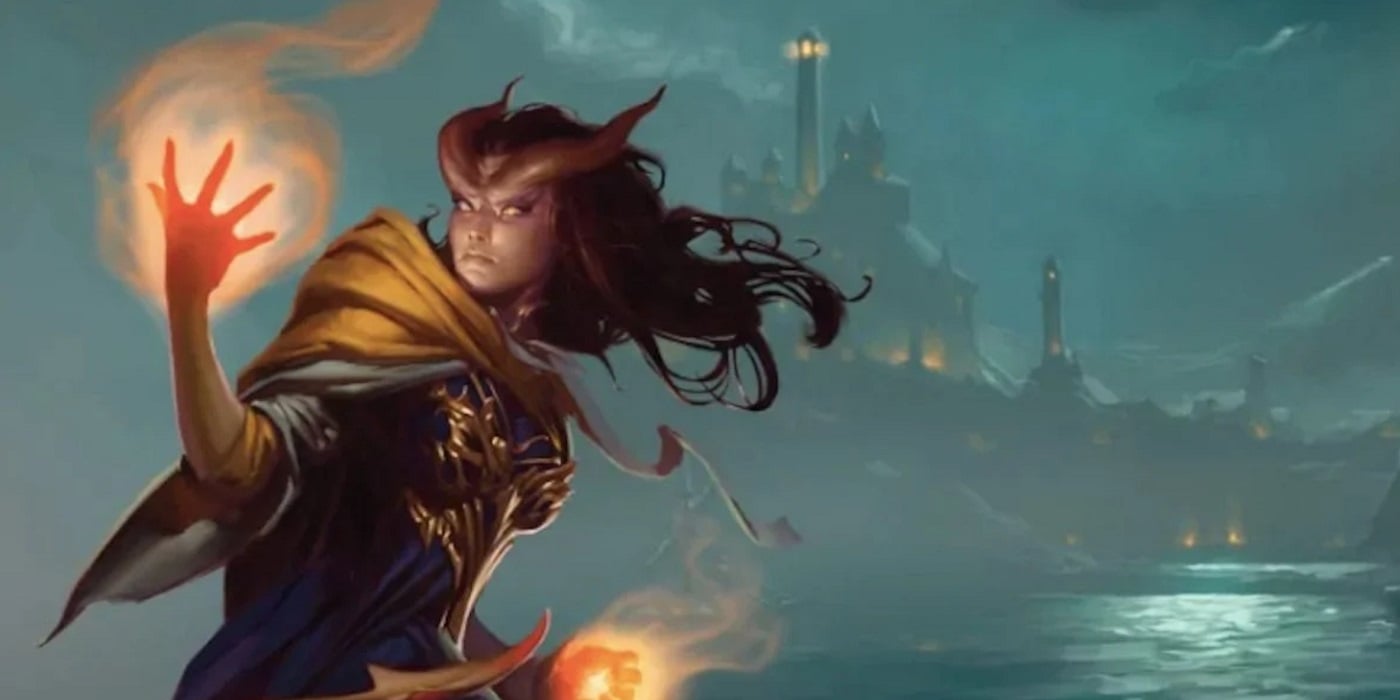
Tieflings are one of the most popular races in D&D. But what makes them tick? Here’s everything you need to know about how to play a Tiefling.
Tieflings are among the top five player race options in D&D, according to D&D Beyond. And looking at the D&D subreddit or in the online fan-art communities, it’s not hard to see why. Tieflings have such a unique look.
With their horns that might be curved and ram-like or spiraling graceful gazelle horns, tails, brightly colored skin, and special eyes that don’t have any sclera or pupils—Tieflings look like they were meant to be characters.
And their brooding backstories support the theory even further. Tieflings are descended from infernals. In the ancient past, a pact made with Asmodeus led to the rise of an infernally-touched people. The first Tieflings bore the mark of that fell magic. Growing horns and tails and gaining a devil’s sight.
The power of the nine hells courses through their blood, and can even influence their abilities. But what does that mean for your D&D character?
Join us as we look at how to play a Tiefling in D&D. You’ll want to look at:
Tiefling Traits
All Tieflings, whatever their bloodline, have a few similarities. They get the same +2/+1 that most standard PHB races get. In the pre-Tasha’s Cauldron of Everything days, they got +2 Charisma/+1 Intelligence, making them especially suited to Warlocks, Sorcerers, Bards, and Paladins.
With the release of Mordenkainen’s Tome of Foes, there was a slew of variant Tieflings who had different abilities and ability score increases. But now that there’s a lot more flexibility with ability score increases (and that’s how it’s looking for One D&D too), that matters less.
The three main features of a Tiefling are hellish resistance, which grants a Tiefling resistance to fire damage.
Darkvision because they can see in the dark with special eyes. And Infernal Legacy. This one’s the big showpiece one. Tieflings know the thaumaturgy cantrip, which is handy as it lets them manifest a sign of supernatural power, including:
- causing their voice to boom up to three times as loud as normal
- making flames flicker, brighten, dim, or change color
- creating harmless (but noticeable) tremors in the ground for 1 minute
- illusory ominous sounds, like a rumble of thunder, raven’s cry, or ominous whisper
- causing unlocked doors or windows to fly open or slam shut
- altering the appearance of their eyes for 1 minute
And they can have up to three of these effects going at any one time, as much as they want.
It’s flavorful and delicious.
And then on top of that, Tieflings gain the hellish rebuke spell at 3rd level and can cast it once per day without a spell slot, as well as darkness at 5th level.
Tiefling Variants
But now let’s talk briefly about the Tiefling variants. They’re still readily available for you to play with. Unless you’re playing in an Adventurer’s League or something like that.
But in Mordenkainen’s Tome of Foes, we got a whole swath of Tieflings descended from/associated with a specific archdevil.
Each of these Tieflings had a different, specific version of the infernal legacy trait. Asmodeus tieflings were the same as the PHB version. By and large, these just
Baalzebul Tieflings got Legacy of Maladomini which gave them thaumaturgy, ray of sickness, and then crown of madness.
Dispater Tieflings and their Legacy of Dis gain thaumaturgy, disguise self, and later detect thoughts.
Fierna Tieflings tap into the Legacy of Phlegethos, gaining the friends cantrip instead of thaumaturgy, as well as charm person, and later suggestion making them more diplomatic than most.
Glasya Tieflings have the Legacy of Malbolge which grants them the minor illusion cantrip, as well as disguise self, and later invisibility.
Levistus Tieflings inherit the Legacy of Stygia, learning ray of frost, armor of Agathys, and darkness.
Mammon Tieflings wield the arcane Legacy of Minauros, gaining the mage hand cantrip, tenser’s floating disk, and later arcane lock.
Mephistopheles Tieflings on the other hand, use the Legacy of Cania to wield hellfire, with mage hand, then burning hands and flame blade added to their abilities.
Zariel Tieflings and the Legacy of Avernus get thaumaturgy, searing smite, and branding smite, making for perfect Paladins.
Tieflings in One D&D
As we look ahead to One D&D, Tieflings seem to have the same themes going for them. They’re descended from fiendish powers and can decide from Abyssal, Cthonic, or Infernal powers as a fiendish legacy. As before, these legacies give them different spells added to their list:
They also gain thaumaturgy, one and all.
Best Classes
With all that in mind, what makes for the best Tiefling? As it happens, they’re really flexible. Especially if you play with the Tiefling variants.
What it comes down to, whatever version of a Tiefling you play, is those bonus spells for determining your extra mechanics. Darkvision is handy but doesn’t change the way you play too much.
If you’re not playing with the One D&D rules, then, as written, classes that focus on Charisma will get a little more mileage out of the package. Their bonus spells are tied to Charisma. So you might want to play a Bard, Sorcerer, Warlock, or even Paladin.
A common variant rule (for 5E) is to let the Tiefling determine which, out of Intelligence, Wisdom, or Charisma, is the spellcasting ability score for those spells. But ultimately it comes down to what you want to play.
Zariel and Mephistopheles Tieflings make for good melee combatants with their bonus smite spells. Consider playing a Hexblade Warlock, Fighter, Paladin, Barbarian, or Rogue, and using your infernal legacy to mix it up with magic and might.
Glasya, Dispateer, and Fierna Tieflings make masterful manipulators and scouts, leaning them toward Bards and Rogues.
Baalzebul, Asmodeus, Levistus, and Mammon Tieflings are all naturally suited to any spellcasting class. Any at all.
Tips and Tricks
When you’re playing, just remember, the sky’s the limit. They are built with a brooding backstory in mind:
Tieflings subsist in small minorities found mostly in human cities or towns, often in the roughest quarters of those places, where they grow up to be swindlers, thieves or crime lords. Sometimes they live among other minority populations in enclaves where they are treated with more respect.
Lacking a homeland, Tieflings know that they have to make their own way in the world and that they have to be strong to survive. They are not quick to trust anyone who claims to be a friend, but when a Tiefling’s companions demonstrate that they trust him or her, a Tiefling learns to extend the same trust to them. And once a Tiefling gives someone loyalty, the Tiefling is a friend or ally for life.
But as you might imagine, there are all sorts of Tieflings out there. You might be bright and cheery, or a semi-competent trash person.
One thing to consider when playing is how have your magical abilities affected your life.
Does the ability to cast thaumaturgy at will influence your day-to-day life? Do you use your cantrips to make your life easy? Or do you try to hide your nature?
Happy adventuring!

